





 Hmong refugees crossing the Mekong River from Laos to Thailand. Artist unknown, c. 1980. Courtesy of Danya Espinosa. Courtesy of the Minnesota Marine Art Museum.
Hmong refugees crossing the Mekong River from Laos to Thailand. Artist unknown, c. 1980. Courtesy of Danya Espinosa. Courtesy of the Minnesota Marine Art Museum.











 Hmong refugees crossing the Mekong River from Laos to Thailand. Artist unknown, c. 1980. Courtesy of Danya Espinosa. Courtesy of the Minnesota Marine Art Museum.
Hmong refugees crossing the Mekong River from Laos to Thailand. Artist unknown, c. 1980. Courtesy of Danya Espinosa. Courtesy of the Minnesota Marine Art Museum.




A boy named Bee flees to the mountains after his friend is shot and killed. He searches for his deceased father and wonders where his friend has gone while warplanes fly overhead.
Bee meets Chue, a young woman with beaded hair, in the jungle. They fall in love and later flee together when soldiers approach.
A reunion in the dark. Fire explodes into the night, as the group of refugees run for a river that will separate their past from their future forever, a land on the other side of the rushing water, a country on the other side of the green earth.
In Thailand, Bee befriends two dogs.
In America, Bee and Chue are impoverished refugees, living in the housing projects, raising two girls. They sing of fallen dreams while their girls learn the songs of America.
Bee finds work in a factory where his supervisor pushes the men to work harder, faster, smarter!– as the machines cry with them.
In the epilogue, the family returns to the Laotian mountains and discovers the old tree has vanished, replaced by a new one. The mountains remain a testament to the past and future. With his family by his side, Bee realizes the value of time and how the Hmong community has progressed.

Culture
Hmong families are organized into an 18-clan structure; all members of a clan recognize that they are related by a common ancestor. The clans are listed below with Hmong spelling, followed with English spelling.
Tsaab/Tsab | Cha/Chang
Tswb | Chue
Kwm | Kue
Lauj | Lo/Lor
Muas | Moua
Phaab/Phab | Pha
Hawj | Her/Hue/Herr/Heu
Taag/Haam | Hang
Khaab/Khab | Khang
Koo | Kong
Lis | Lee/Ly
Thoj | Thao/Thor
Vaaj/Vaj | Vang
Vwj | Vue
Xjooj | Xiong
Yaaj/Yaj | Yang/Ya
Hmong people address relatives in more distinctive terms compared to Westerners. Here are a few examples in Moob Leeg (green dialect), followed by Hmoob Dawb (white dialect):
(Mom’s side) (From male perspective) (From male perspective)
GRANDMA GRANDPA

Nam Nam Tais Yawm Tais
GRANDPA
(Mom’s side)
(From female perspective) (From female perspective)
(Dad’s side) (Dad’s side)
Yawm Tij Laug/Kwv
Tij Laug/Kwv Niam Txiv Pog
Niam Tais GRANDMA BROTHER SISTER
BROTHER SISTER
Nug Hlub/Nug Yaus
Muam Hlub/Muam Yau
Nam Laug/Nam Hluas
Ntxhais Xeeb Ntxwv
Yawm Tais MOM DAD NIECE NEPHEW
Ntxhais Xeeb Ntxwv
Nus Hlob/Nus Yaus
Niam Laus/Niam Hluas
Ntxhais Xeeb Ntxwv
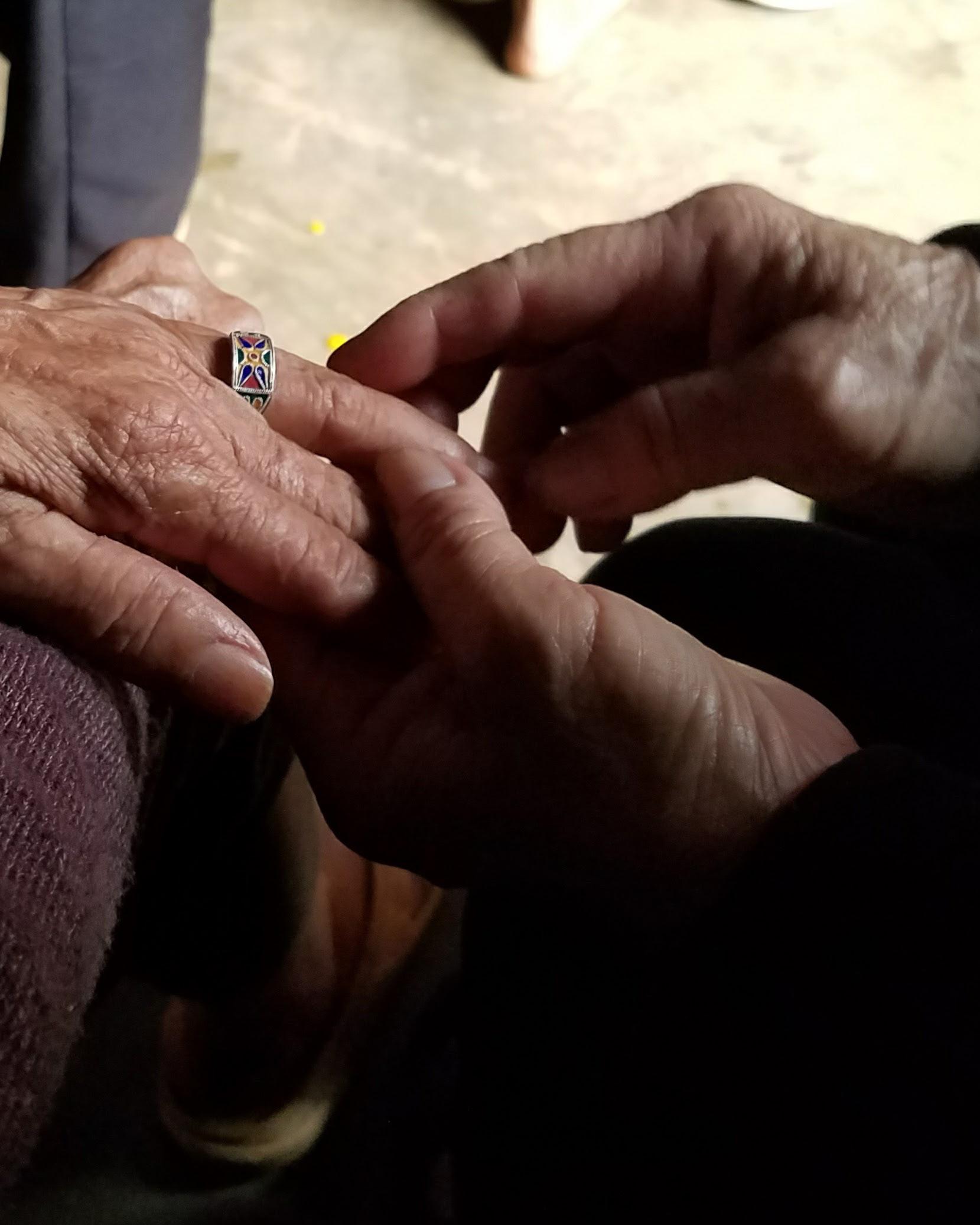



4,000–3,000 BCE
Archaeological finds suggest that Hmong people originated in central China, near the Yellow and Yangtze rivers. Highly independent and industrious, the Hmong innovate methods of agriculture that continue today, including credit for being among the first people to cultivate rice and to spread this staple throughout Asia.
5,000–2,700 BCE 1790–1860s
For centuries, the Hmong have lived autonomously in remote areas of China, retaining a unique culture despite ongoing conflicts with Imperial China. Centuries of war with the Chinese cause the Hmong to migrate into Southeast Asia, particularly to the highlands of Laos, Thailand, Vietnam, and Myanmar (Burma).
The Hmong start to integrate into Lao mainstream society.
After the fall of Laos to Communist forces, the Hmong are forced to flee their homelands. In November 1975, the first Hmong arrive in the United States and settle in Minnesota.
Many Hmong who had settled in the western United States relocate to the Midwest due to a cheaper cost of living, better educational opportunities, stronger social services, and family unification.
U.S. Army Special Forces and CIA covertly recruit and train the Hmong to fight and protect America’s interests inside Laos. General Vang Pao leads Hmong soldiers into battles against the Pathet Lao and North Vietnamese Army in what is known as the Secret War in Laos, a part of the Vietnam War.
A cease-fire and political peace treaty is signed, known as the Vientiane Agreement, giving the Pathet Lao majority control of the Lao Government. The United States and all foreign powers are forced to withdraw from Laos. More than 120,000 Hmong are displaced from their villages, forcing them to relocate to refugee centers established by the United States throughout Laos.
The 1980 Refugee Act standardizes resettlement services for all refugees, allowing for the families of the Secret Army to immigrate to the United States.

5,000 of the 15,000 Hmong refugees from the Buddhist monastery Wat Tham Krabok, Thailand, resettle in Minnesota, making this the last wave of Hmong immigrants coming to the United States.

The Hmong are an ethnic group indigenous to lands near the Yellow River, credited with being the first to cultivate wet rice. Genocide and imperialism of the 19th century forced their migration from southern China into the mountains of Laos, Thailand, and Vietnam.
In 1961, the CIA covertly recruited Hmong men and boys to fight on behalf of the United States in the Vietnam War. Given their expertise of the land, and military experience in the Royal Lao Army, the Hmong were trained in guerilla warfare tactics and referred to as “Special Guerilla Units.” The Hmong led strategies behind missions and operations; holding off North Vietnamese soldiers on the Ho Chi Minh Trail, blocking their access to resourcing soldiers in the south. Known as The Secret War, given that U.S. forces were forbidden to enter Laos due to the 1954 Geneva Accord, the crucial history and recognition of the roles in which Hmong soldiers and nurses contributed during this time, have long gone unknown to much of the world.
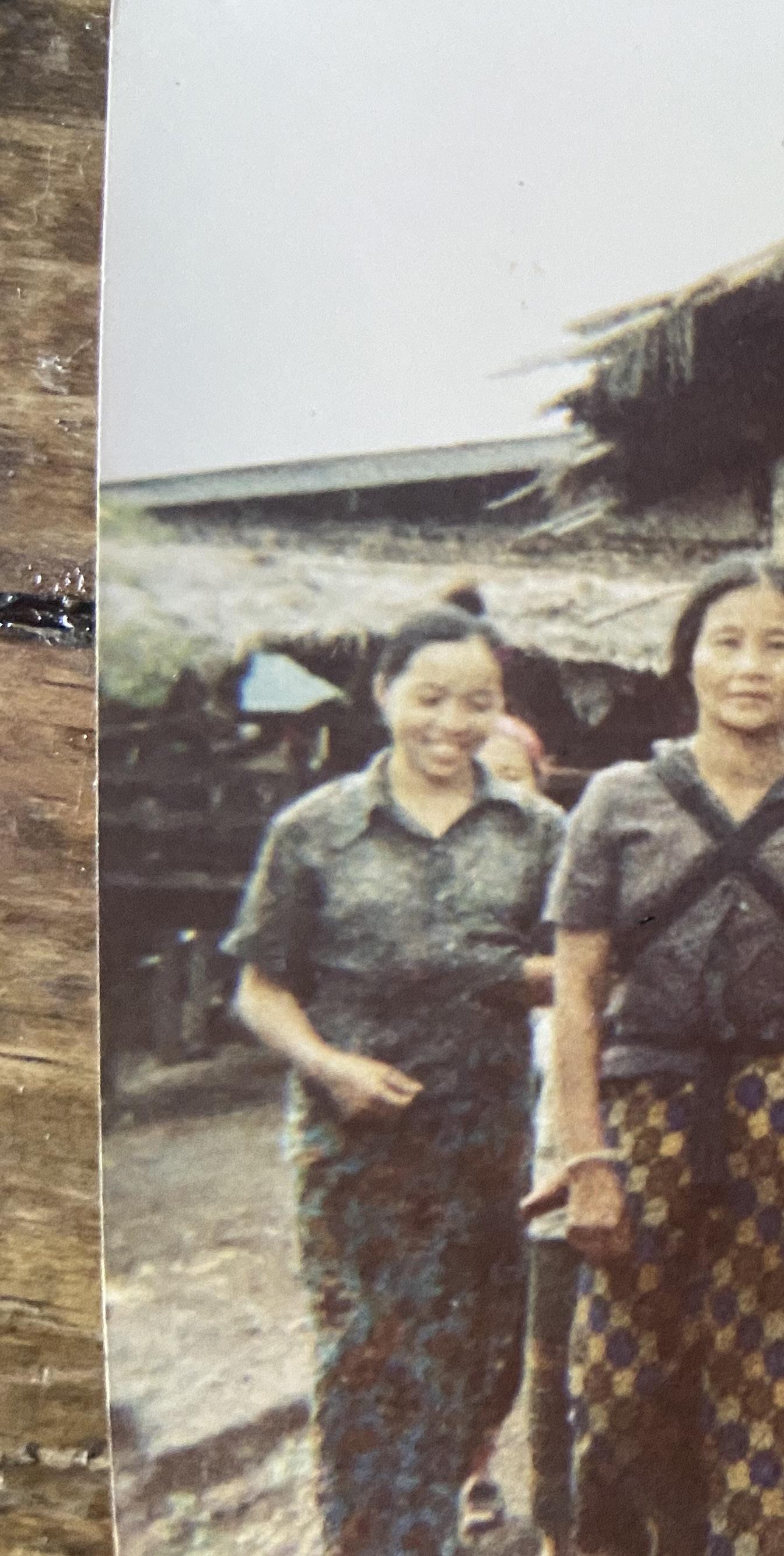
After the withdrawal of U.S. forces in 1973—to escape persecution and genocide from the communist controlled state—the Hmong were forced to flee their homelands. Thousands fled back into the jungles in hiding, and hundreds of thousands escaped by swimming across the Mekong River to Thailand. Countless lives were lost in the efforts. By the end of the war, an estimated 1/3 of the Hmong male population of Laos had lost their lives.
Displaced from their lands, refugee camps in Thailand became home to generations of Hmong people while they awaited the prospect of resettlement to another country. The Hmong diaspora now spreads among countries such as the United States, France, Australia, Germany, Canada, and South America. With a population of over 66,000, Minnesota is home to the largest concentration of Hmong in America.


Hair
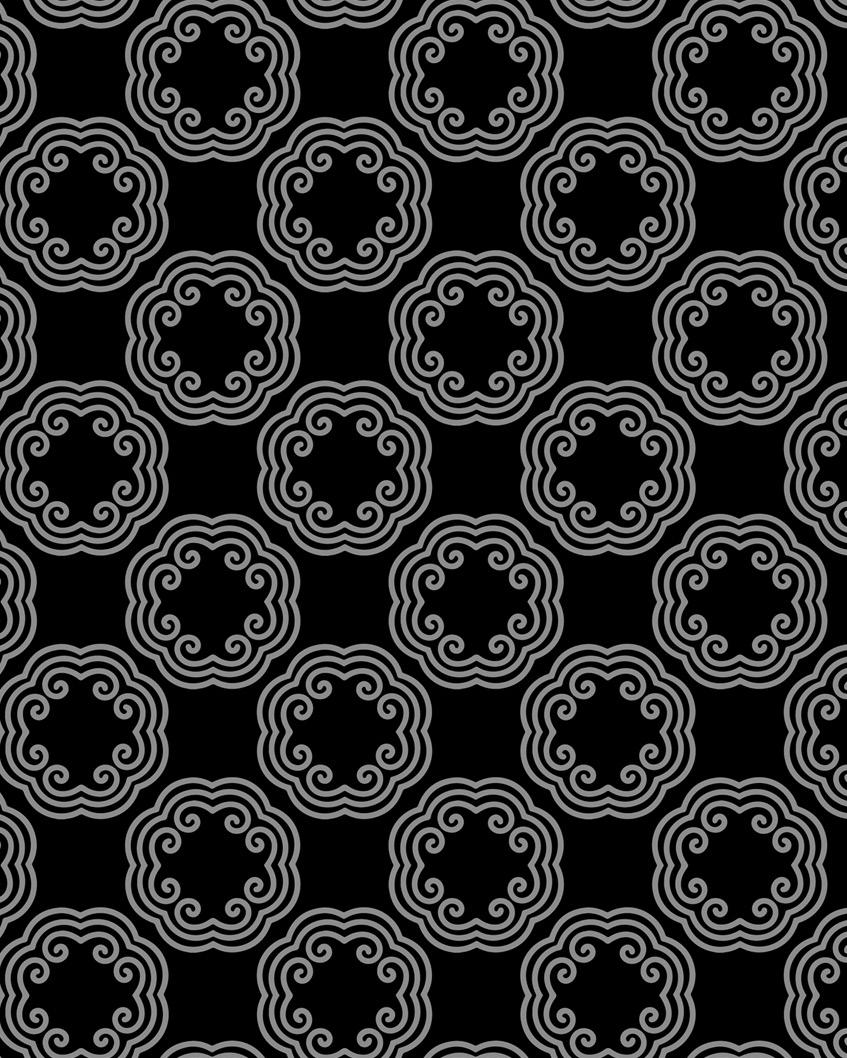
Traditionally, many regions of Hmong women wear their hair in a coiled bun on top of their heads. The bun is formed by twisting and coiling the hair into a circular shape, often with the help of a hairpiece or hairpins. In some regions, the hair is then secured with a colorful cloth or ribbon tied around the bun’s base. The style is sometimes called a “flower bun”
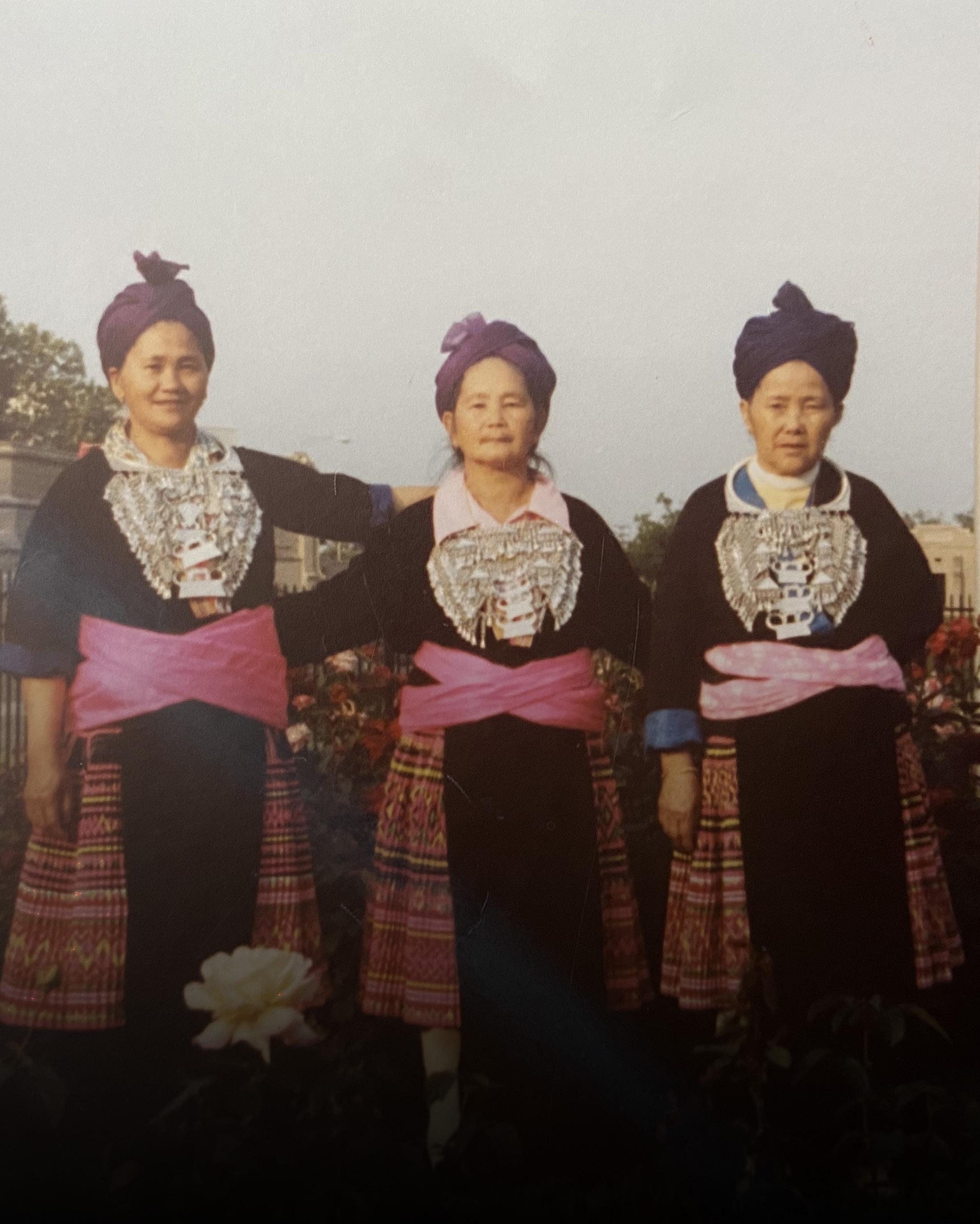
The Hmong have traditionally utilized hemp for various purposes, including textile production. Hemp fibers are strong and durable, making them ideal for creating clothing, bags, and other woven items. Hmong women are skilled at spinning and weaving hemp fibers into intricate designs, often incorporating bright colors and decorative motifs. In the mountainous regions of northern Laos, a number of Hmong villages still keep the tradition of hemp weaving alive. However, for the traditional costumes in The Song Poet performance, linen is used instead of hemp because it is more readily available and breathable for use on the stage.
Additionally, hemp seeds were traditionally used medicianally, eaten whole or used to create oil by roasting and pressing them in a mortar and pestle.
In some Hmong communities, hemp is also used in religious ceremonies. It is believed that wearing hemp shoes can help the deceased safely cross the caterpillar river and the green worm mountain to reach their ancestors’ resting place.
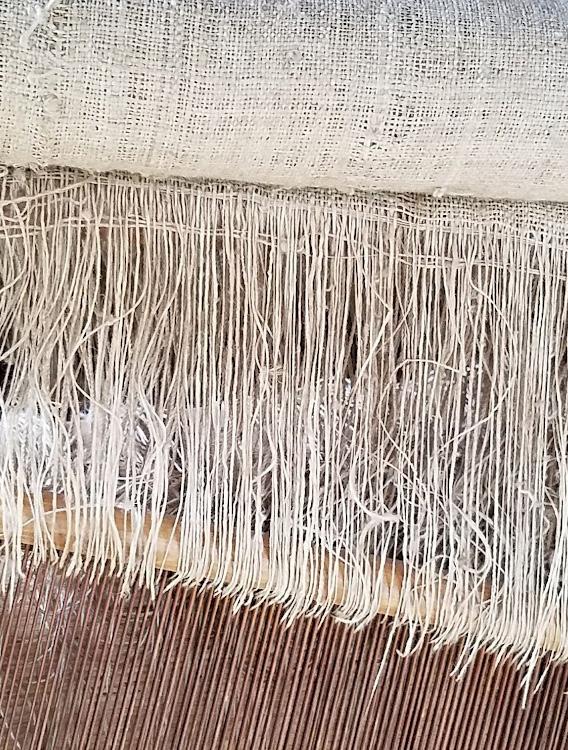
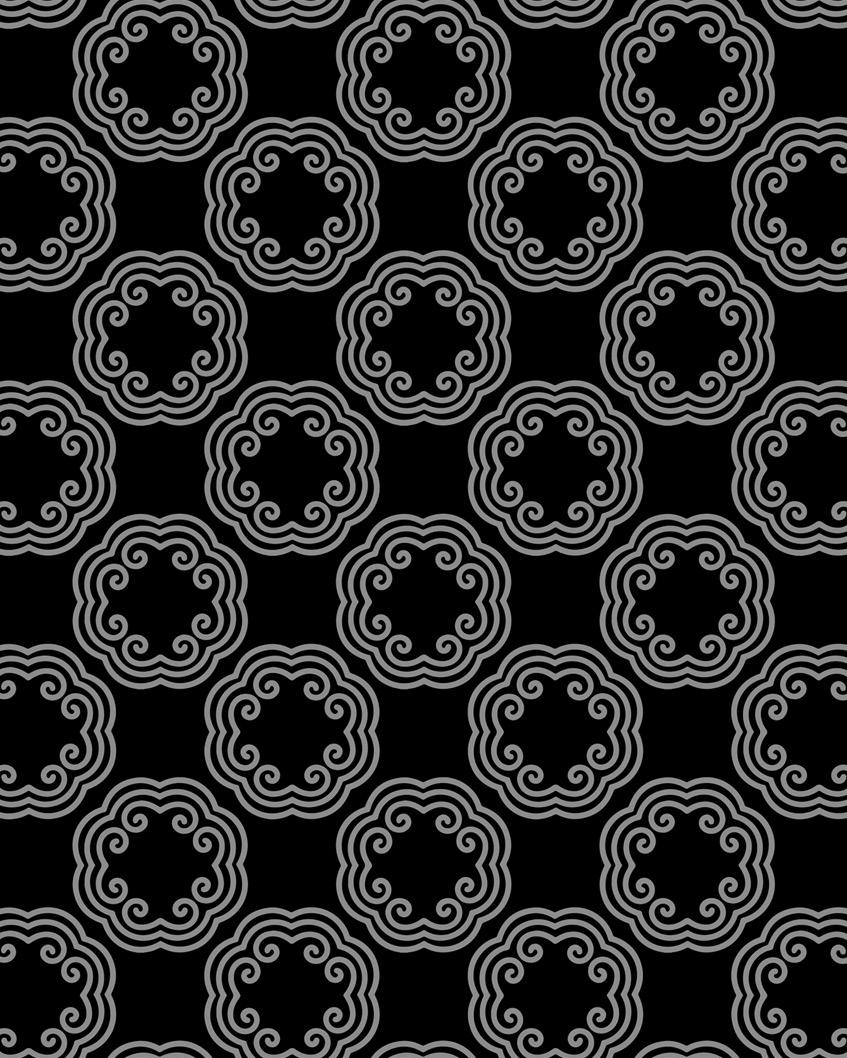
Silver has been an important aspect of Hmong culture for centuries. It was a valuable commodity that could be traded and sold, making it an important part of the Hmong economy. Historically, due to the impact of war and conflict, Hmong people did not have a fixed place of residence. They would exchange their family savings for silver ingots and craft them into ornaments that were worn by women in the family.
In traditional Hmong culture, the wearing of silver is often associated with specific occasions such as weddings, funerals, and New Year celebrations. During these events, Hmong people wear intricate silver jewelry and ornaments, including a silver necklace called a “xauv.” While the Hmong now adorn the silver jewelry as an accessory to their clothing, it also serves as a reminder of their history and freedom.
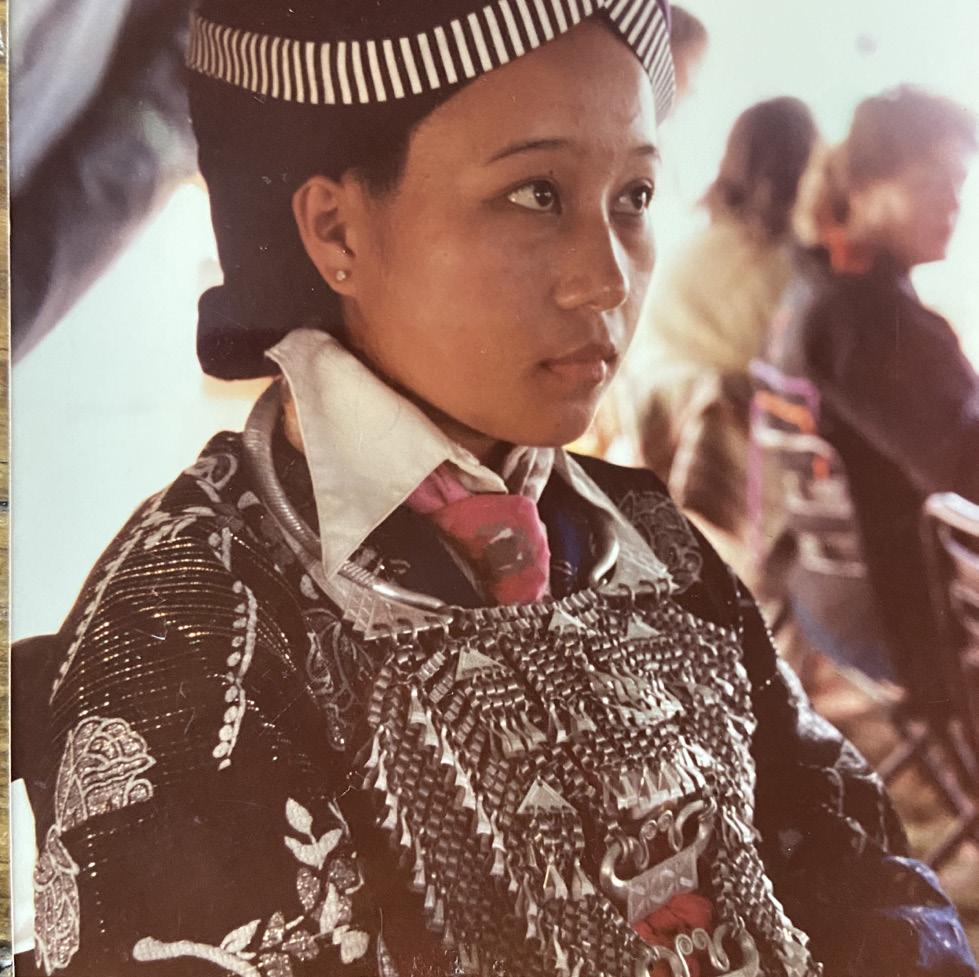

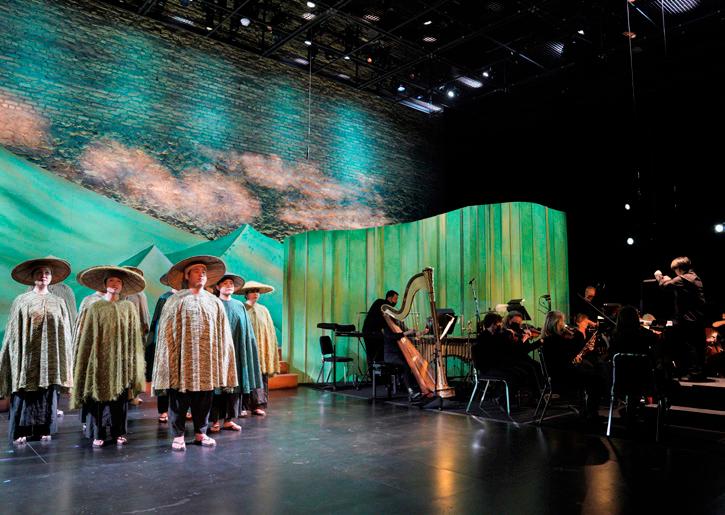

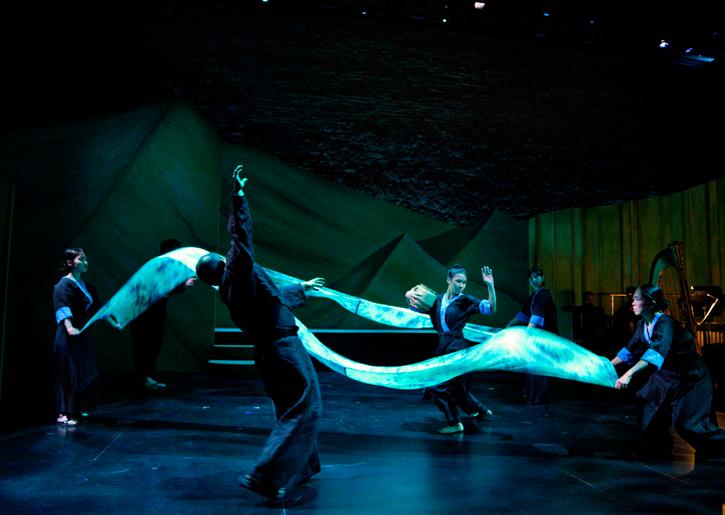
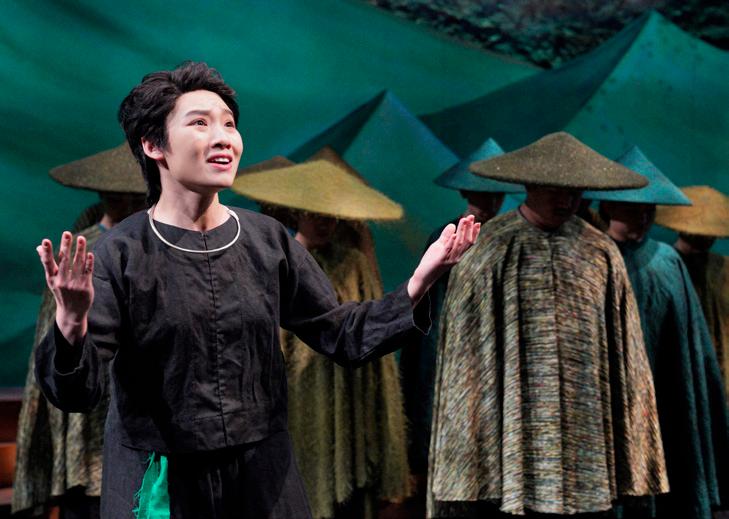



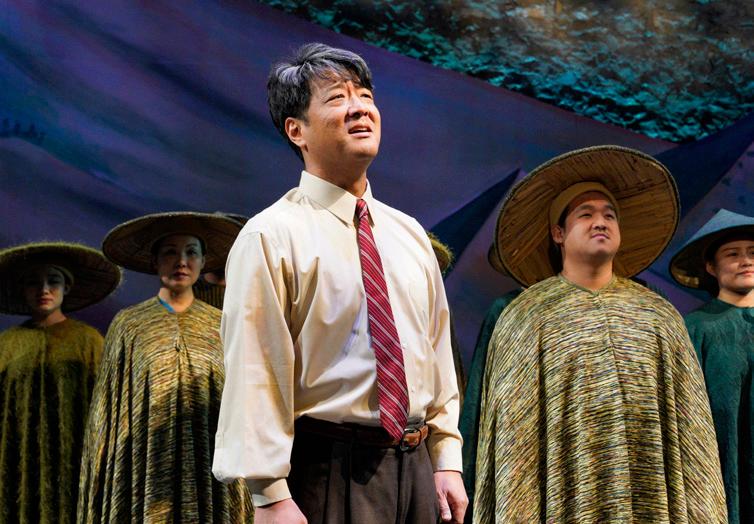


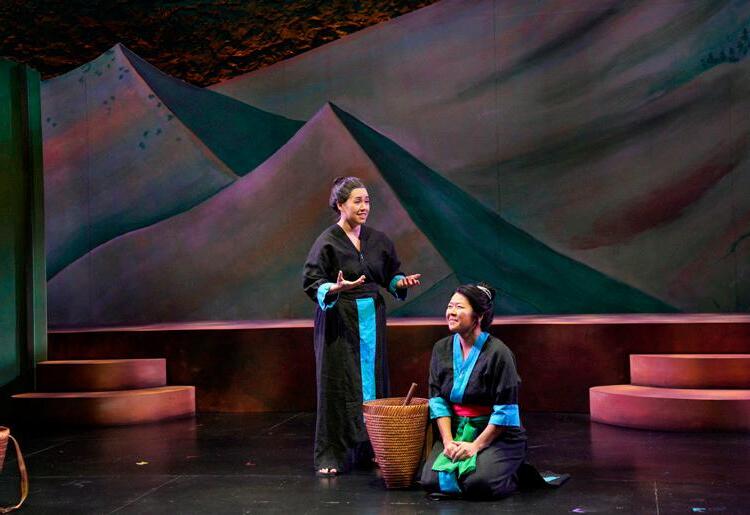
 The Song Poet, 2023. Photos by Cory Weaver
The Song Poet, 2023. Photos by Cory Weaver
In May of 2017, Minnesota Opera’s Chief Learning Officer, Jamie Andrews, presented the idea of commissioning an operatic adaptation of The Song Poet for use with MN Opera’s middle- and high-school training program, then called Project Opera. After securing the appropriate permissions from the book’s author, Kao Kalia Yang, work began in earnest with composer Jocelyn Hagen to adapt the piece into a work that could be performed by students during the 2020-2021 season.
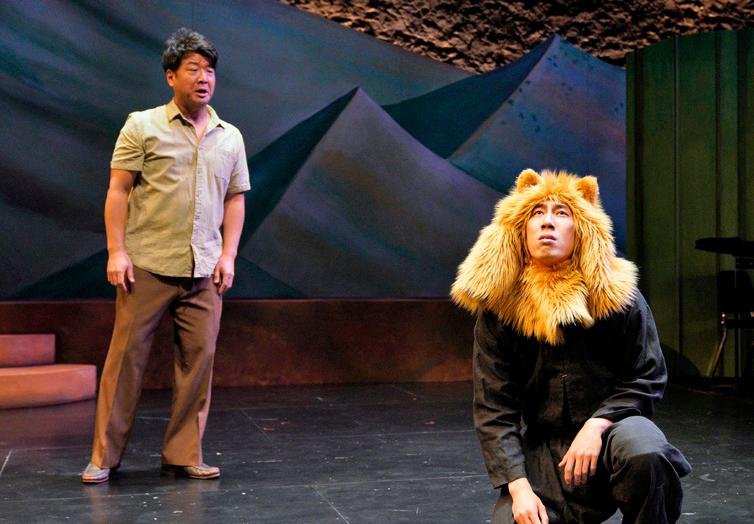
When the pandemic interrupted plans for that season, the company began to reevaluate the beauty, depth, and complexity inherent in the story of the Yang family journey, believing that the musical adaptation might be better served in the hands of more experienced artists. Hagen and Yang began to reimagine the work they had created, devising an updated version of the score over the spring and summer of 2022, finally completing the work this past fall. A workshop of the opera took place this past December, with a public presentation of the score in the concert hall of the Ordway in St. Paul on Thursday, December 15, 2023. Rehearsals began on February 8, 2023 for the premiere production, which opened on Thursday, March 9, 2023 at the Luminary Arts Center in Minneapolis.
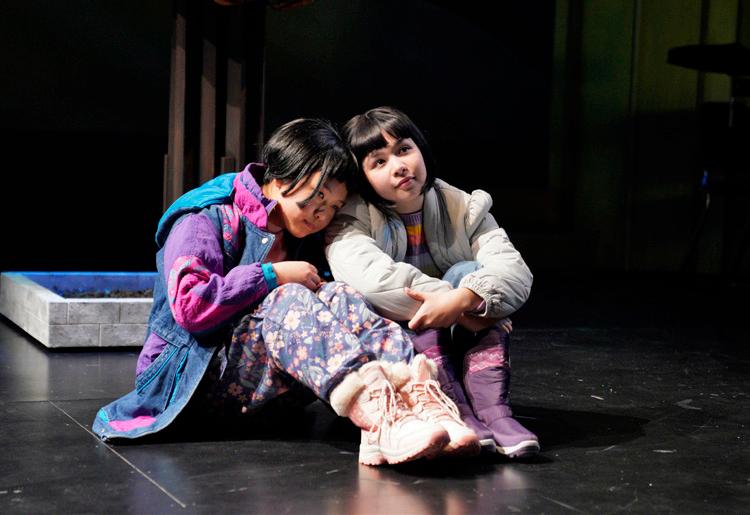
Credits
Based on the book The Song Poet by Kao Kalia Yang
Other books by Kalia: The Latehomecomer, The Most Beautiful Thing, From the Tops of the Trees
Composer: Jocelyn Hagen
Librettist: Kao Kalia Yang
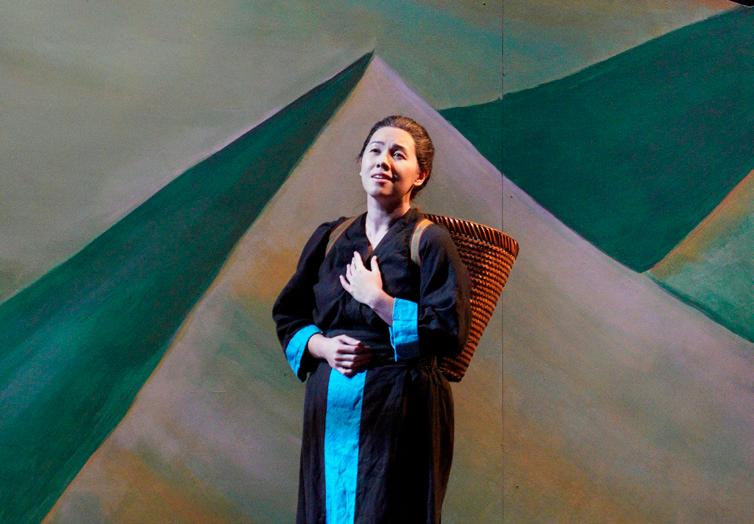
For this MN Opera Cultural Guide:
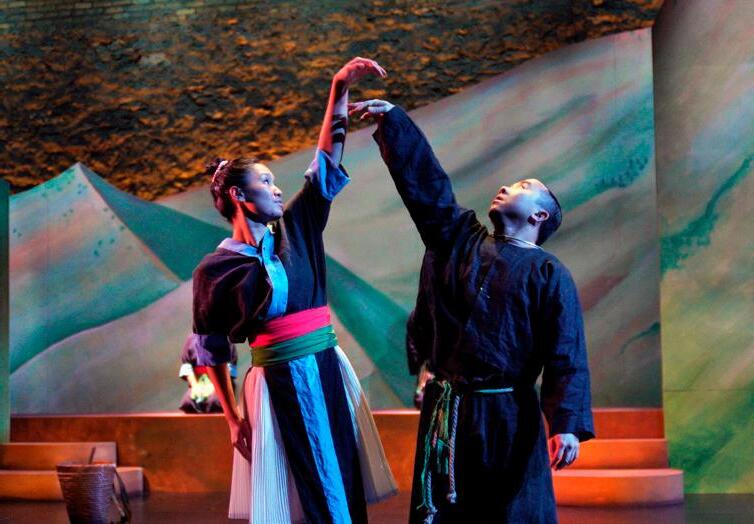

Cultural Consultants: Josephine Yang, Lee Pao Xiong
Content Producer: Samuel Phillips
Research and Copy: Yuanfei Chen
Art Direction and Design: Genie Hien Tran
k: Photo courtesy of Kao Kalia Yang and her family
●: Photo courtesy of Josephine Yang and her family
The Song Poet is a MN Opera production in collaboration with Theater Mu. Thanks to the St. Paul Foundation for making this project possible.


